
Thread Talk | All That Glitters – Gold in Fashion
1 – Welcome to #ThreadTalk
Get ready for #fashionhistory – it’s been a while, but I’m back. Today’s topic is All That Glitters – we’re talking about fashioning fabric with gold and metal, but especially real gold. Below, 1610-1620 – Dress of Electress Magdalena Syblla of Saxony.
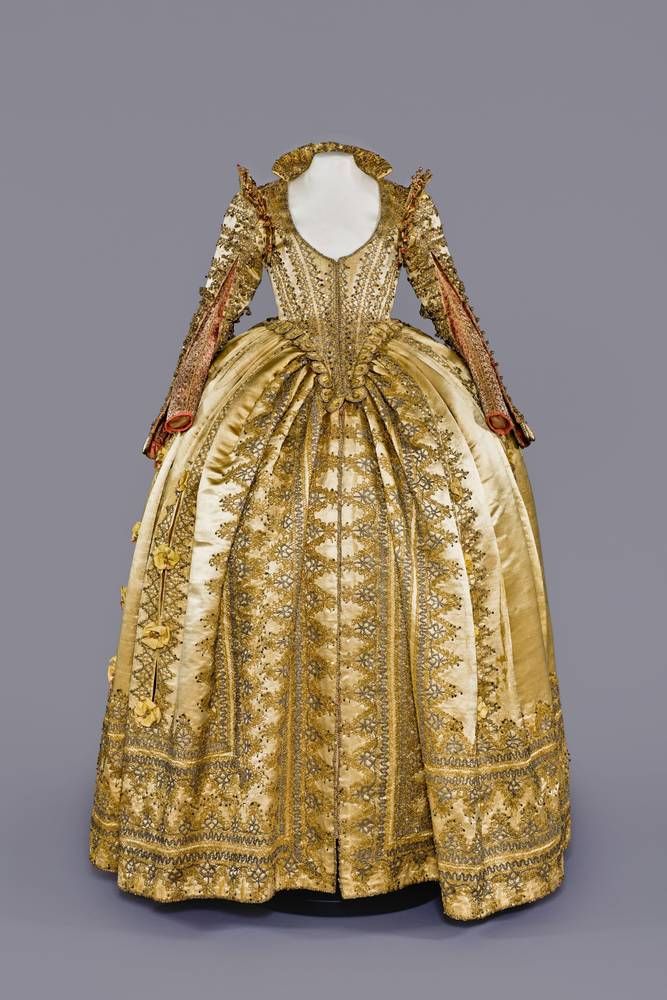
2 – To understand how we make fabric out of gold, let’s chat about my favorite element: Au. Gold isn’t just shiny & beautiful, it also resists corrosion & is extremely malleable. Also? Gold is alien. Scientists posit it came to earth via massive moon and meteor collisions billions of years ago.
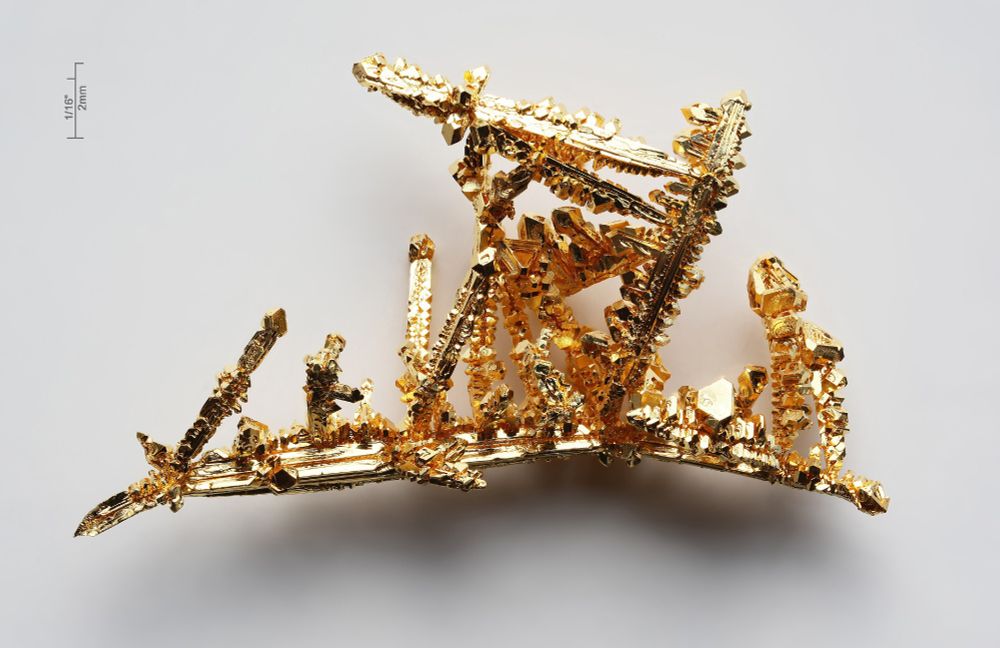
3 – I am a geology nerd, so I could go on at length. But all you need to know for today is that you can hammer gold down to .5mm & made into foil. That foil is made into delicate wire & wrapped around silk, linen, or cotton–called lamellation. Then: embroider as desired. (Below: Spain C 1300)
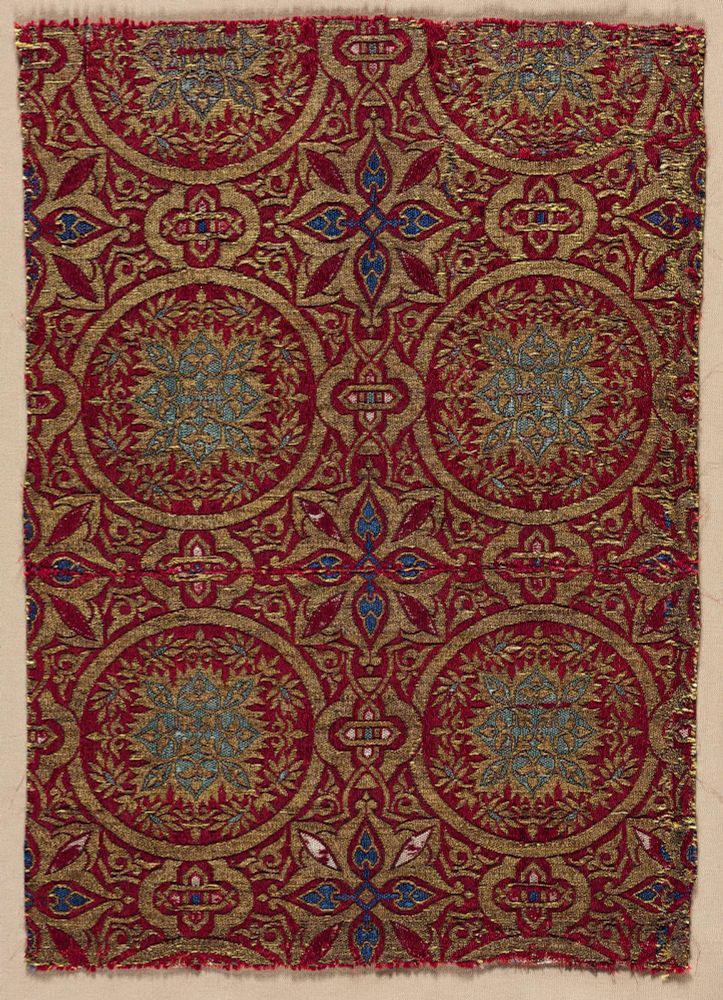
4 – It’s a manual process, and goldwork–the art of embroidery with gold thread–dates to China’s Shang Dynasty (1570-1045 BCE) but went global. Gold was used to designate social, religious, & economic status. Which means people have done horrible things to attain it. (Nasij from China, 13th C)
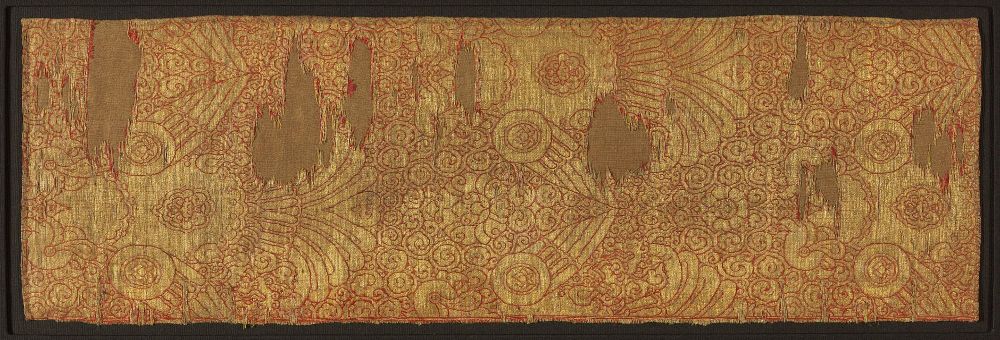
5 – In fact! There may be no more destructive force on earth than the pursuit of gold. Every imaginable atrocity from war to genocide to total environmental devastation. It was particularly nasty during European colonization, but it’s a story as old as time. (Muisca raft, 13-16th C)
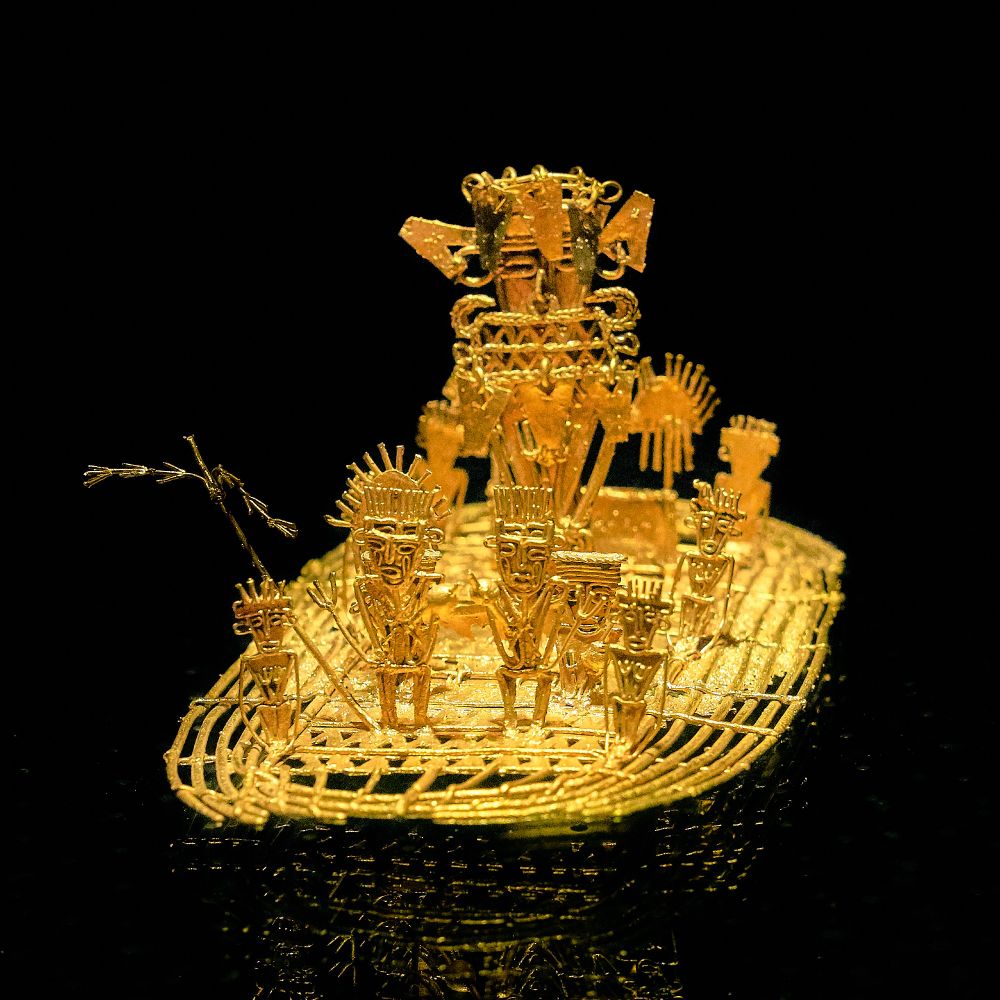
6 – Gold shows up in pre-history, unrefined &“native” as it’s called. But it’s not until around 4200 BCE we find actual artefacts of worked metal in Bulgaria. We have evidence of mining as early as 1320 BCE in Egypt. Goldwork follows. (Women’s Robe, Liao Dynasty, 10th century)
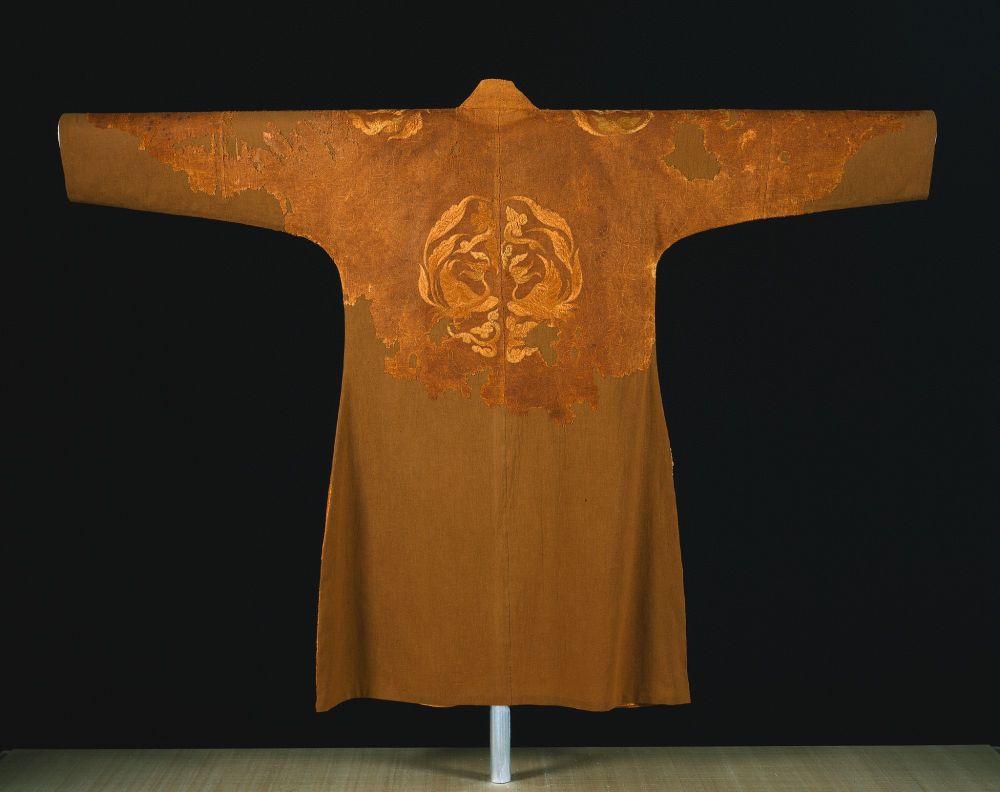
7 – You also can find gold threads in brocade, which is woven patterned fabric. This look is most recognizable in the Renaissance, but it was a great way to add shimmer to any outfit. This is one of my favorites, Princess Magdalena Sibylla’s dress c 1630-36, Italy (who also wore the first gown)
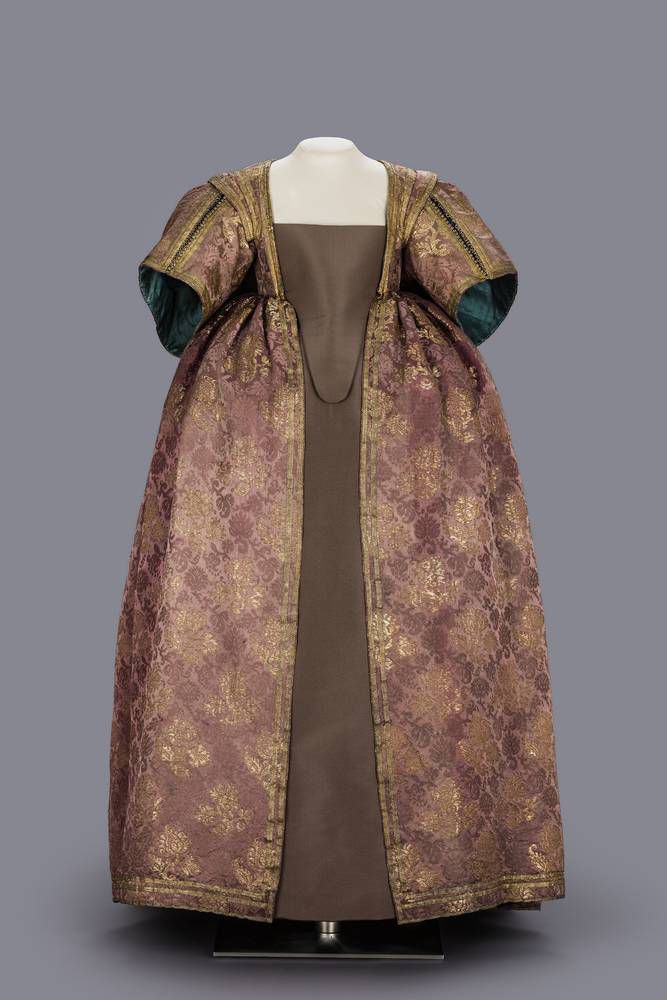
8 – Lampas is another of weaving technique that produces cloth of gold. The production of lampas employs a weft of taffeta with a supplemental weft on top of it. It dates to 1000 CE in terms of first production. The Mongols really loved it, and this kaftan is amazing. 13th or 14th C
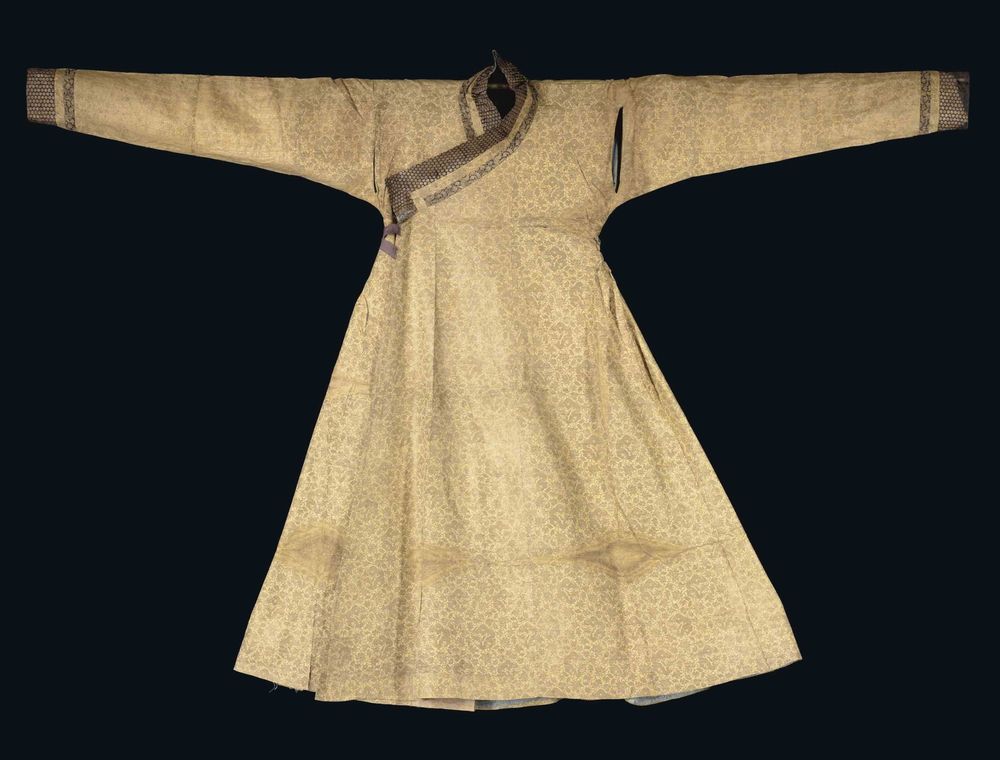
9 – The Mongols also loved cloth of gold, which is 100% just woven gold lamellated threads. Ghengis Khan, known for his brutality and murderous rampages, spared artisans like weavers. These weavers used various kinds of gold thread to produce three-dimensional designs which still amaze today.
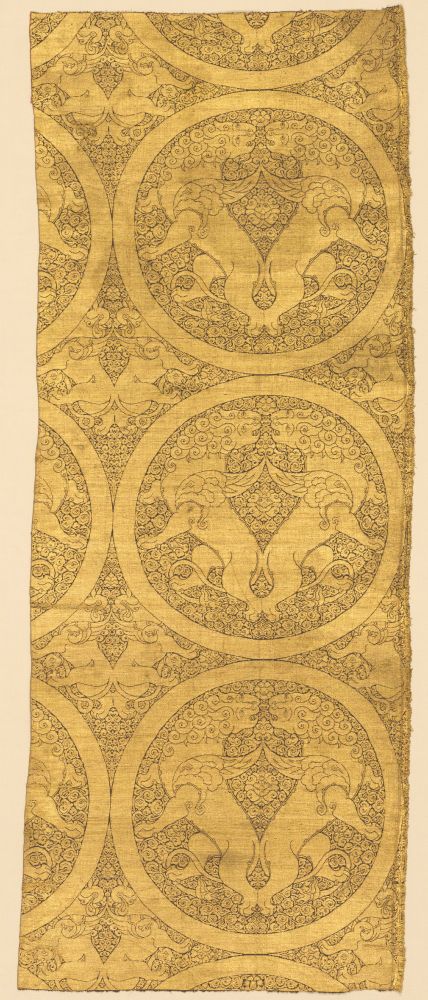
10 – Khan was known to have tents adorned with two-toned gold on campaign. You can imagine what that might look like. You know who else did? Henry VIII. In fact, Henry has the corner on the market for cloth of gold searches because of his Field of Cloth of Gold in 1520.
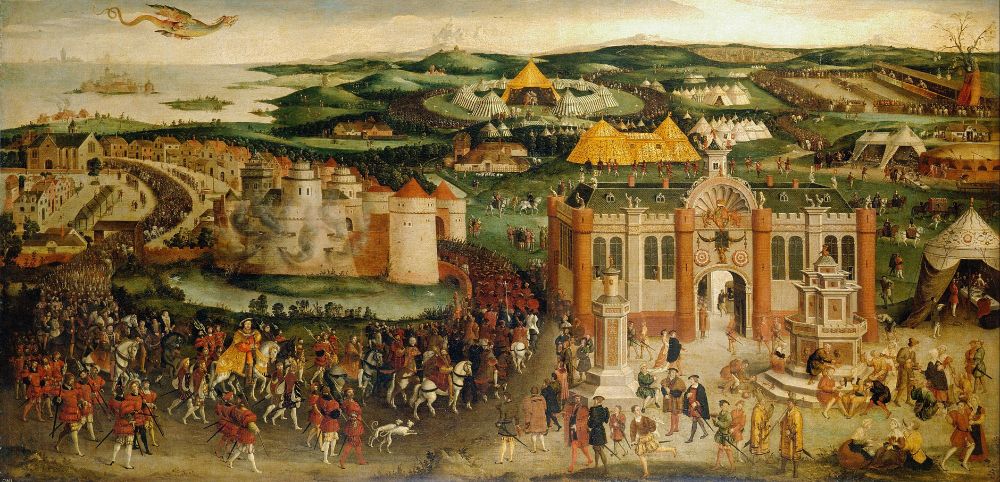
11 – Henry VIII was another horrible, murderous human, and also a narcissist. The 18 day event, co-sponsored by Francis I of France, cost the equivalent of $19M. Both monarchs also wore cloth of gold as they rode out to meet one another. For all the peacocking, it had no real political impact.
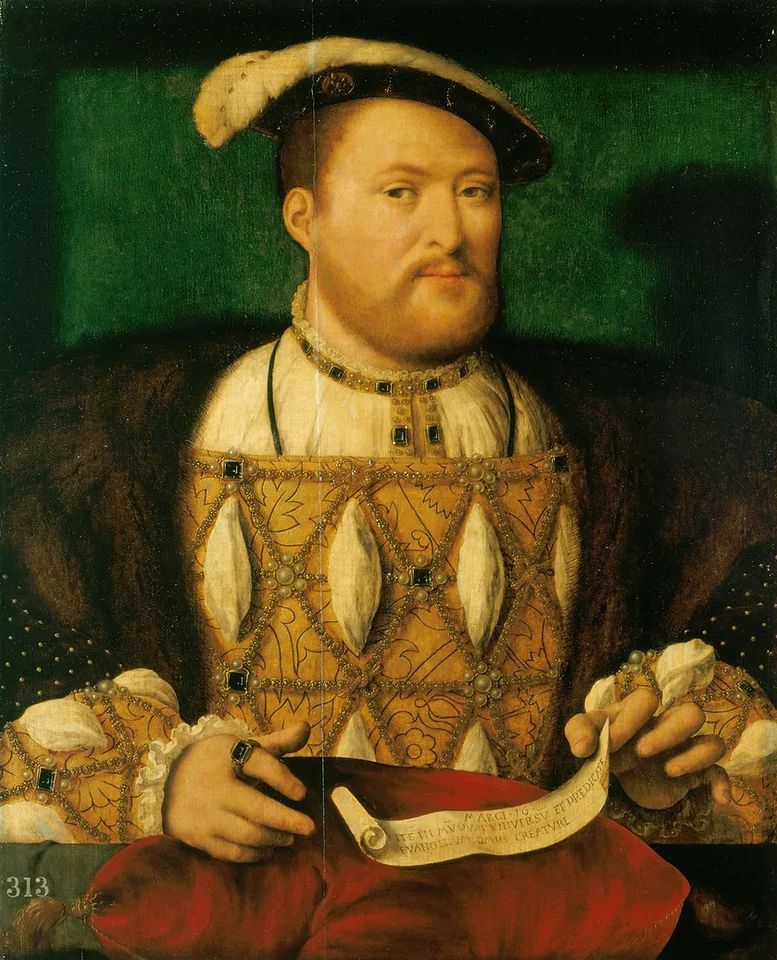
12 – Edward III was the first to enact sumptuary laws in England against the wearing of cloth of gold, and this continued. Elizabeth I was very, very concerned with what people of her court were wearing. Of course, her coronation gown was cloth of gold. It must have been insanely heavy.
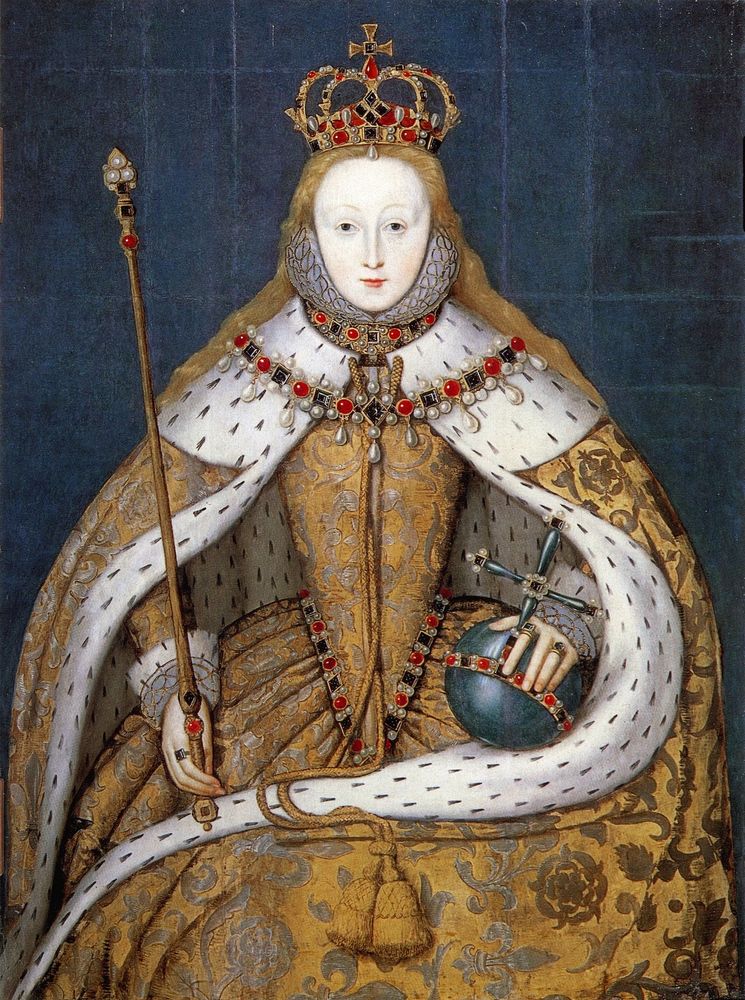
13 – Of course, in a post-medieval world, such excess was also important for the royals, flashing the same fabric used for centuries by the Roman Catholic Church. Cloth of gold appears in garments from all over Europe in the Middle Ages. This cloth of gold VELVET one slaps.
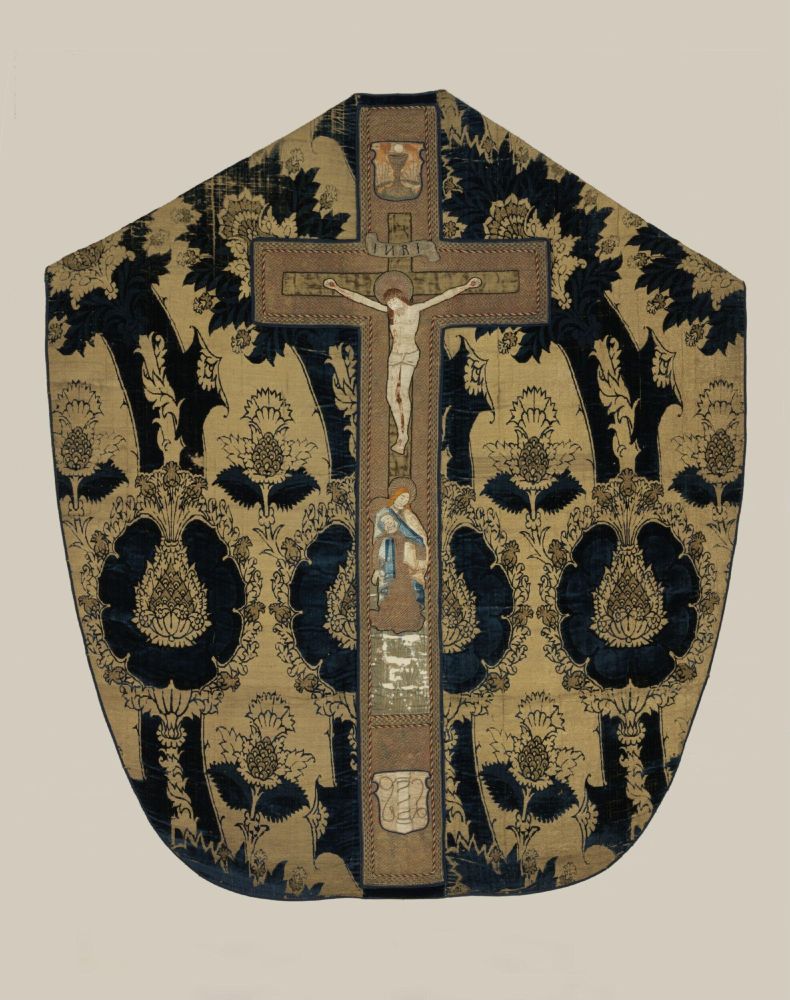
14 – Now, there are other ways to make gold thread, & the Mongols popularized an approach which included an animal or other organic substrate (like paper). You can also pull metal to make super thin wire, & embroider thusly. Modern gold lame uses synthetic fabric, like polyester. (Panel, 1840s.)
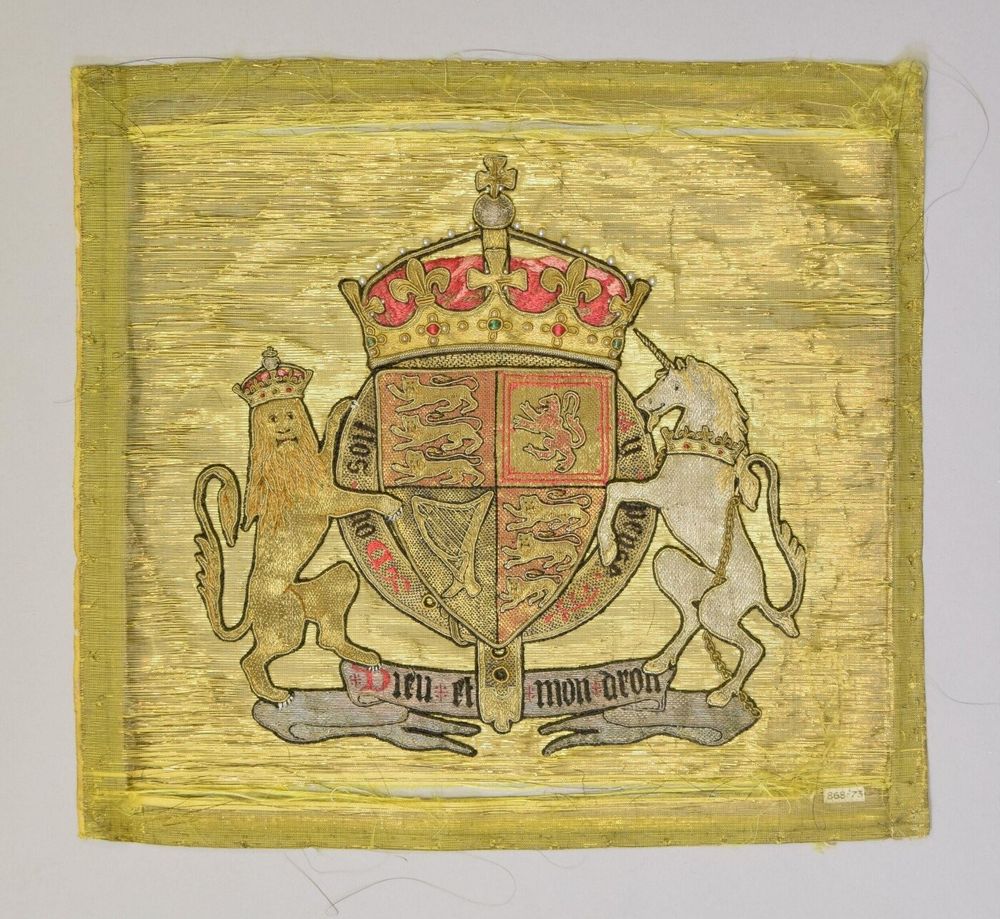
15 – So, to the fashion. Given its inherent value, it’s hard to find extant gowns of cloth of gold, but I’m including brocades & embroidery. I can’t guarantee everything is 100% gold. Museum descriptions are fickle. First off: HELLO, NURSE. State dress, 1697, coronation of Augustus the Strong.
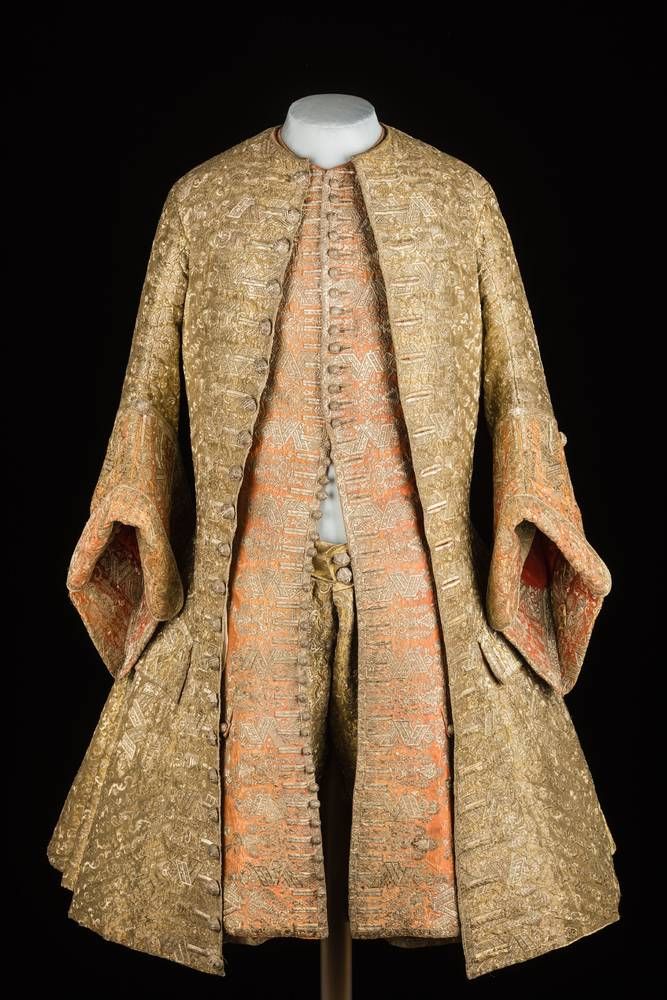
16 – Deep breath, it looks like this isn’t threading like I hoped, so… I will put the rest here. This cape is of European make, but from the second half of the 16th Century made out of Ming Dynasty cloth. The cut of it is absolutely stunning, and could frankly stun on the red carpet today.
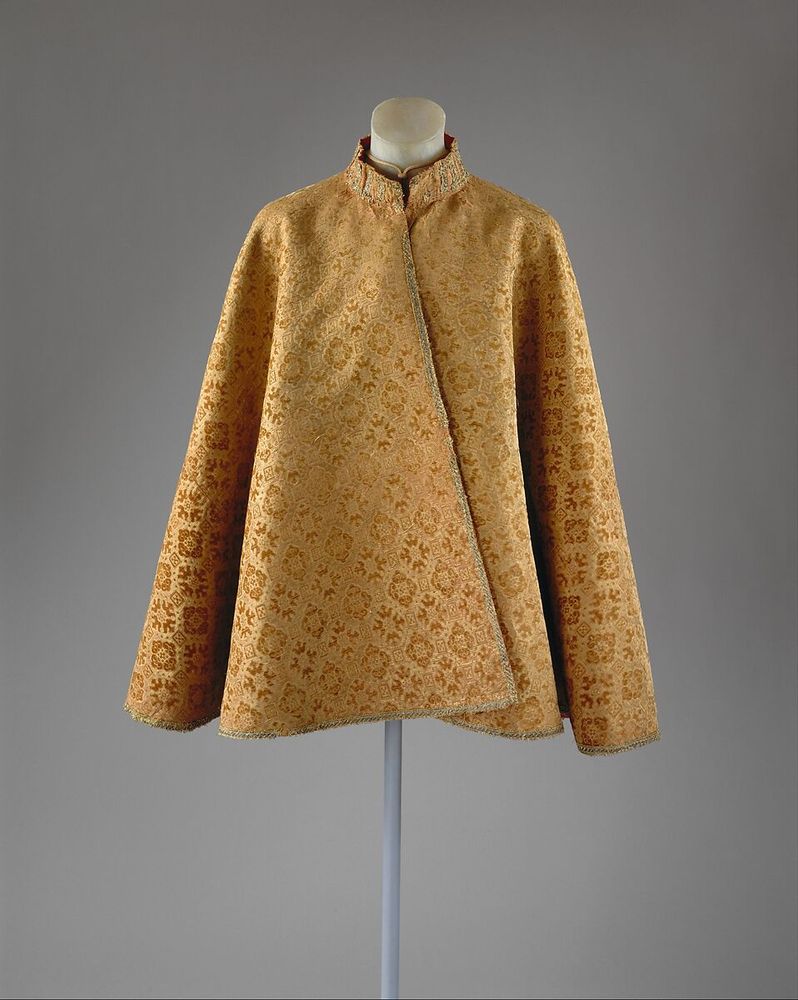
17 – I am always here for absolutely STUNNING menswear, and purple and gold make my brain shiver happily. This whole suit is British and is ca. 1760. It’s got all the flair of court fashion, and somehow has miraculously survived the test of time. Also, I would 100% wear this.
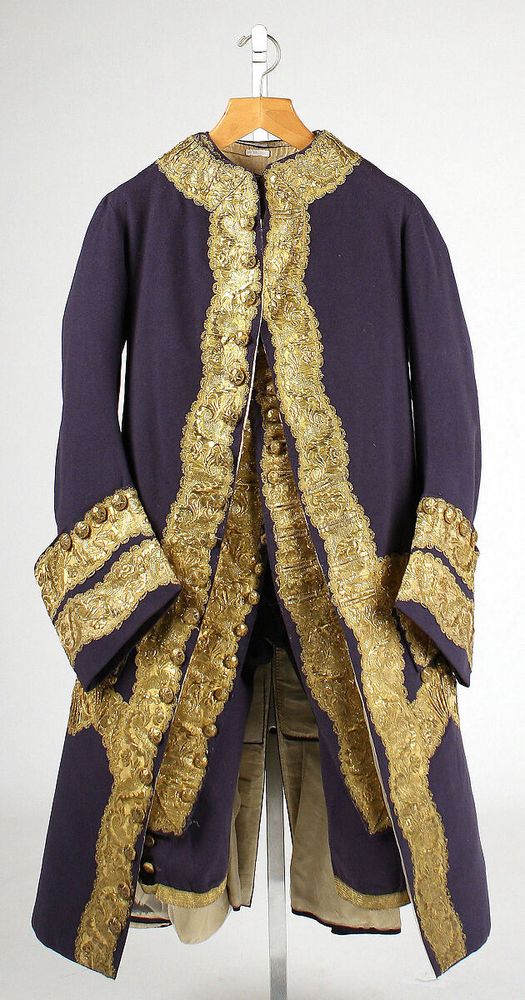
18 – We need to talk more about gold lamé, and this 1930s jacket is everything and then some. I feel like, somehow, Henry VIII would also wear it. It definitely feels extra like him. This is by C.G. Gunther Son’s, via the Met Museum.
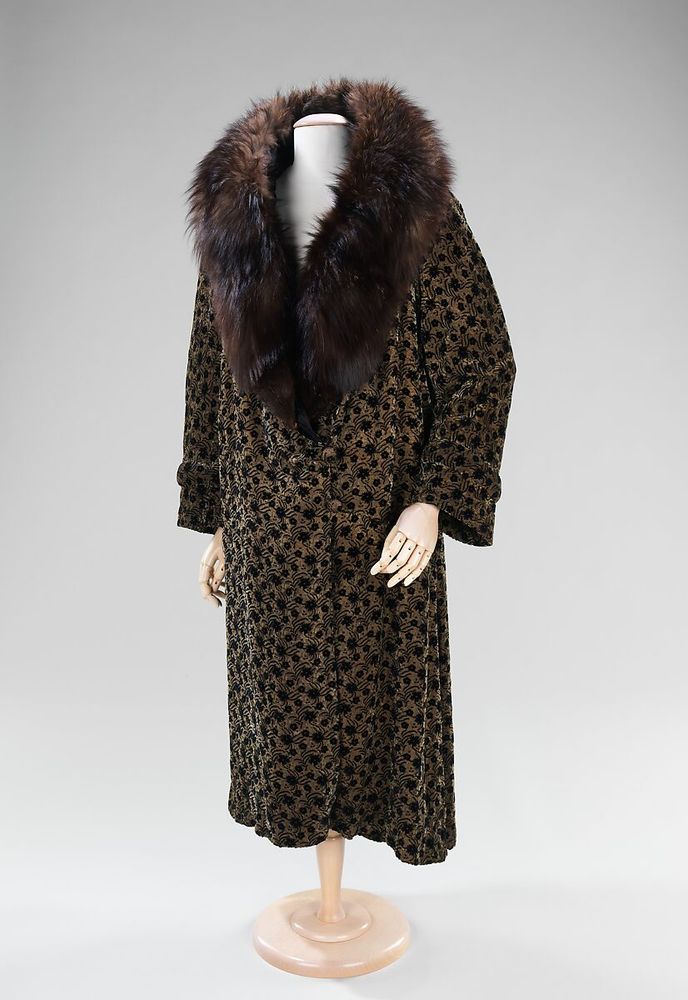
19 – This Ottoman woman’s garment, known as an enteri, is just lovely in design and composition. I love the scalloped edges. It dates from the late 19th century, and would have been part of a more elaborate outfit.
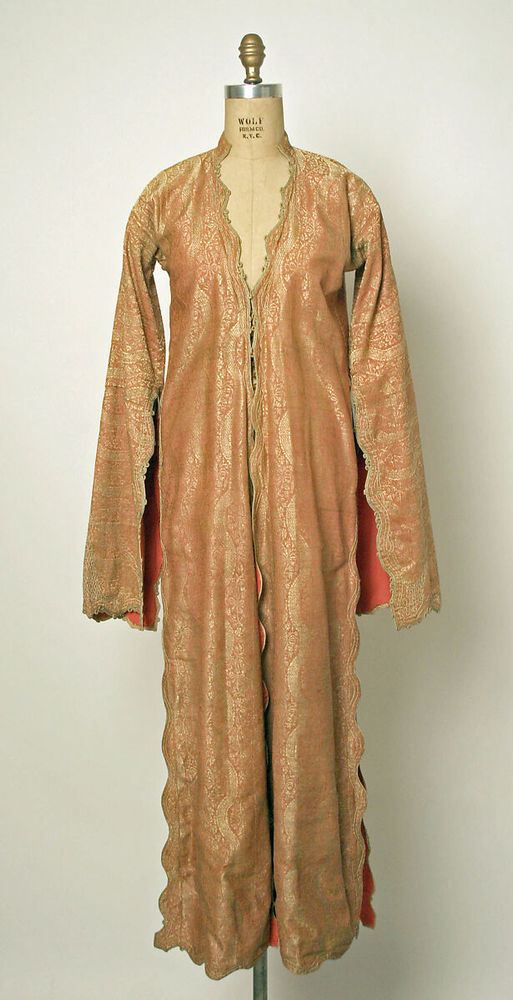
20 – Noh theatre costumes from Japan never fail to delight, and this gorgeous robe ticks all the boxes. I love the dizzying array of floral sprays here, and the gold interlaced inside would have caught the lantern light so beautifully on stage. Edo era, 18th century.
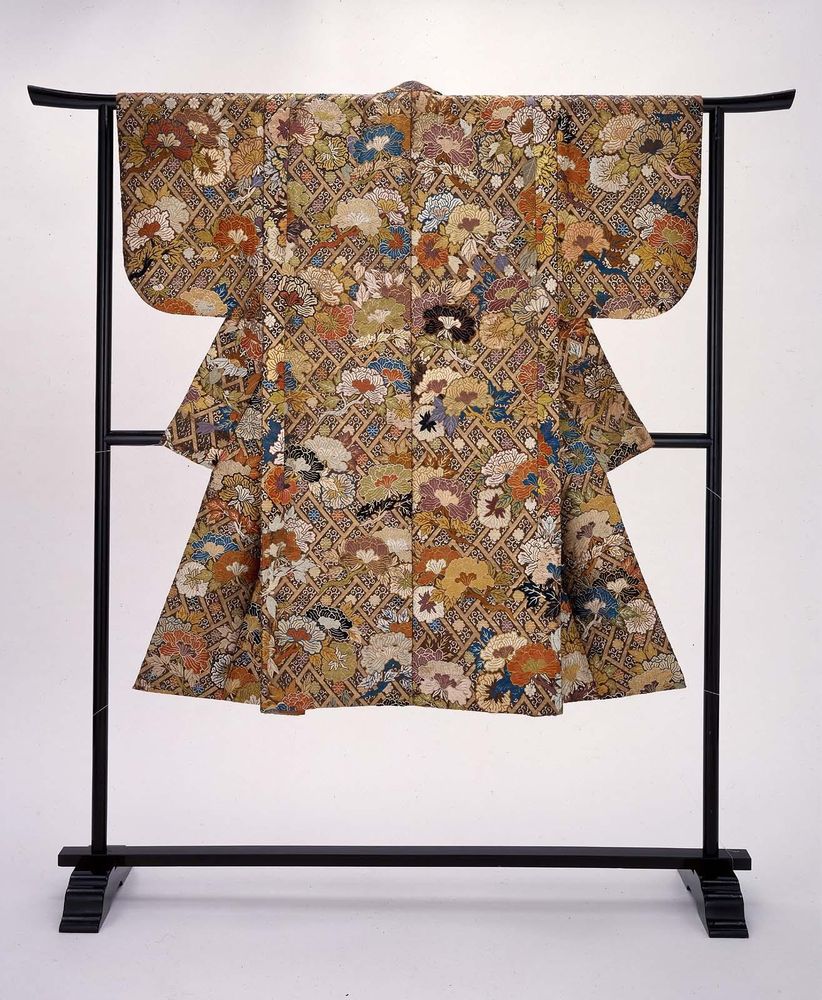
21 – Can’t have #ThreadTalk
without a bit of Worth. So here’s a lovely use of gold thread and gold beadwork that ensures the wearer really makes an entrance. This dates from 1915, and I just adore that peek-a-boo netting!
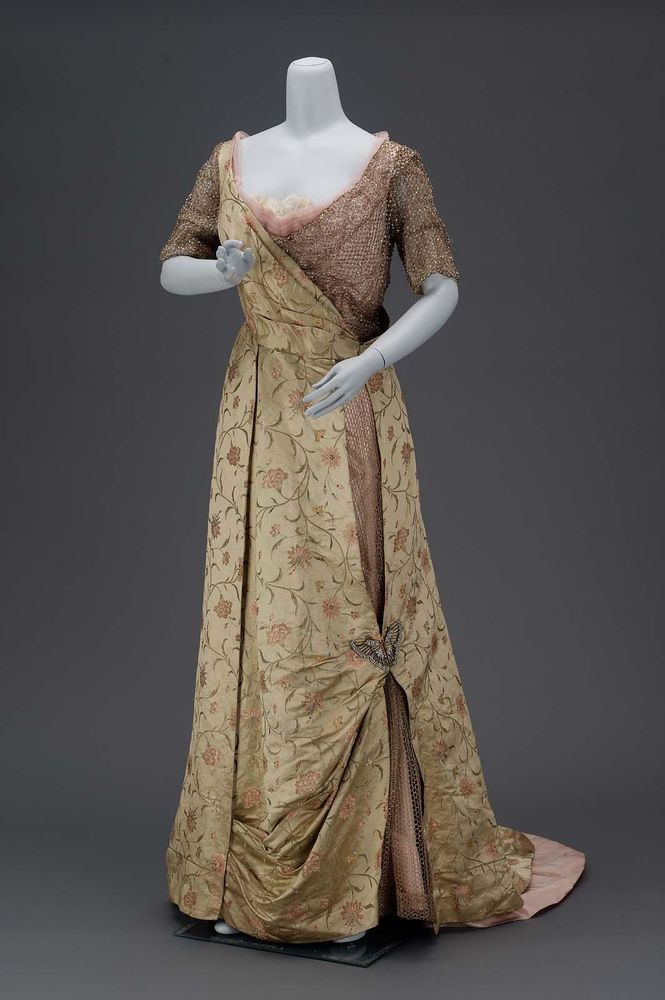
22 – Billionaires and robber barons of course love to exert their power over people, and what better than to reuse a gorgeous Indian sari in your gown? That’s precisely what Mrs. Rockefeller did for this one… Just keeping the spirit of Imperialism alive. (For real, all credit to the sari maker)
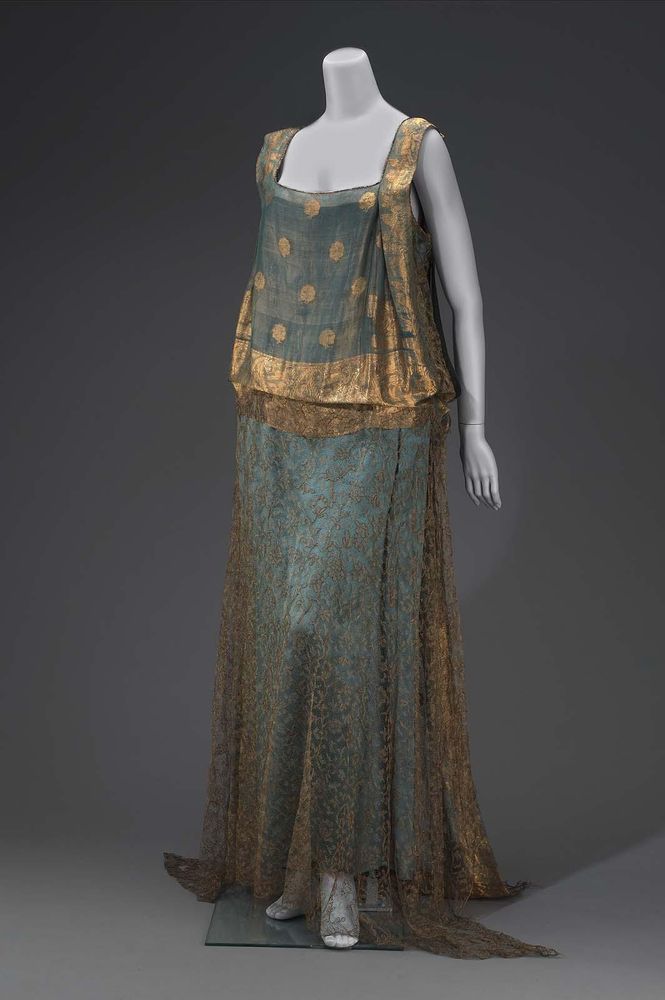
23 – And lastly, because this is SO VERY EXTRA. I present this amazing robe. Covered in fruit. Because why not? Dating from the 1920s.
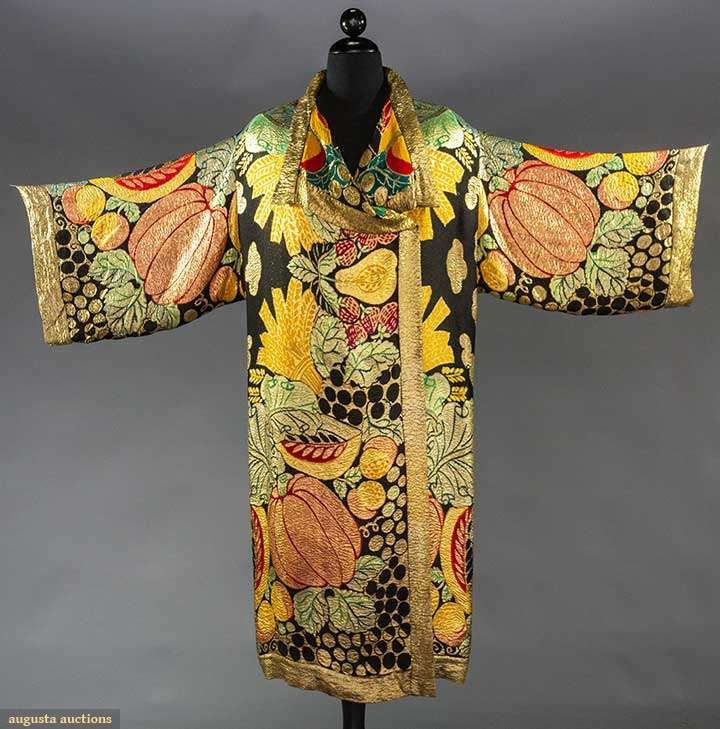
BIBLIOGRAPHY
https://www.jstor.org/stable/767057
Hoeniger, Cathleen S. “Cloth of Gold and Silver: Simone Martini’s Techniques for Representing Luxury Textiles.” Gesta 30, no. 2 (1991): 154–62. https://doi.org/10.2307/767057.
https://en.wikipedia.org/wiki/Cloth_of_gold
https://www.jstor.org/stable/751383
Duits, Rembrandt. “Figured Riches: The Value of Gold Brocades in Fifteenth-Century Florentine Painting.” Journal of the Warburg and Courtauld Institutes 62 (1999): 60–92. https://doi.org/10.2307/751383.
https://www.jstor.org/stable/10.1086/673421
McCall, Timothy. “Brilliant Bodies: Material Culture and the Adornment of Men in North Italy’s Quattrocento Courts.” I Tatti Studies in the Italian Renaissance 16, no. 1/2 (2013): 445–90. https://doi.org/10.1086/673421.
Hart, Mary & Ganio, Monica & Maish, Susan & MacLennan, Douglas & Trentelman, Karen. (2021). Vittae Auratae: Interpreting the History and Technology of a Group of Roman Gold Textile Fragments. Getty Research Journal. 14. 1-20. 10.1086/716571.
https://www.jstor.org/stable/25161379
Wardwell, Anne E. “Two Silk and Gold Textiles of the Early Mongol Period.” The Bulletin of the Cleveland Museum of Art 79, no. 10 (1992): 354–78. http://www.jstor.org/stable/25161379.
https://artsandculture.google.com/story/cloths-of-gold/NgWxtEfnk6pI8Q
https://www.jstor.org/stable/23208503
Phipps, Elena. “WOVEN SILVER AND GOLD: METALLIC YARNS IN COLONIAL ANDEAN TEXTILES.” Source: Notes in the History of Art 29, no. 3 (2010): 4–11. http://www.jstor.org/stable/23208503.
https://www.jstor.org/stable/48766679
Hart, Mary Louise, Monica Ganio, Susan Lansing Maish, Douglas MacLennan, and Karen Trentelman. “Vittae Auratae: Interpreting the History and Technology of a Group of Roman Gold Textile Fragments.” Getty Research Journal, no. 14 (2021): 1–20. https://www.jstor.org/stable/48766679.
https://www.jstor.org/stable/20543139
Astarac, André d’. “Cloth of Gold and Cloth of Silver.” Art & Life 11, no. 7 (1920): 398–403. https://doi.org/10.2307/20543139.
https://en.wikipedia.org/wiki/Field_of_the_Cloth_of_Gold
https://en.wikipedia.org/wiki/Ore_genesis
https://blogs.loc.gov/law/2014/02/sumptuary-laws/#:~:text=Goldwork and cloth of gold,were known as sumptuary laws.
https://muse.jhu.edu/pub/123/article/813517
https://www.sciencedirect.com/topics/engineering/textile-substrate
https://www.virtue.to/articles/margaret.html
https://www.luigi-bevilacqua.com/en/cloth-of-gold
https://collection.powerhouse.com.au/object/196156
https://owl.museum-digital.de/object/56
https://skd-online-collection.skd.museum/Details/Index/282685
https://skd-online-collection.skd.museum/Details/Index/283355
https://earth.yale.edu/news/dazzling-and-fortunate-story-gold
https://www.clevelandart.org/art/1995.20
https://www.davidmus.dk/islamic-art/the-il-khanids-and-the-golden-horde/item/134?culture=en-us
https://www.clevelandart.org/art/1996.297
https://www.thebritishmonarchy.co.uk/post/field-of-the-cloth-of-gold-1520






One Comment
sara
good to see,